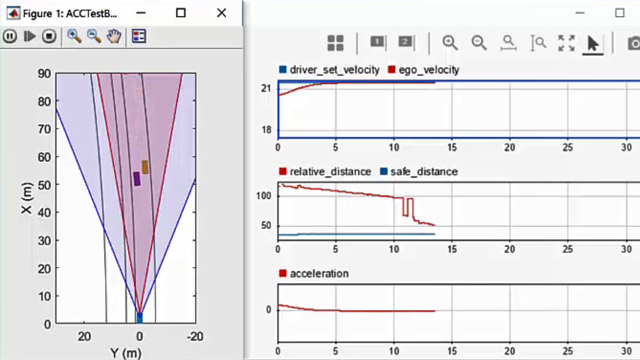Main Content
initcakf
Create constant-acceleration linear Kalman filter from detection report
Syntax
Description
filter= initcakf(detection)filterfrom information contained in adetectionreport. For more information about the linear Kalman filter, seetrackingKF.
The function initializes a constant acceleration state with the same convention asconstaccandcameas, [x;vx;ax;y;vy;ay;z;vz;az].
Examples
Input Arguments
Output Arguments
Algorithms
The function computes the process noise matrix assuming a one-second time step and an acceleration rate standard deviation of 1 m/s3.
You can use this function as the
FilterInitializationFcn财产的multiObjectTrackerobject.
Extended Capabilities
See Also
Functions
Objects
Introduced in R2017a

